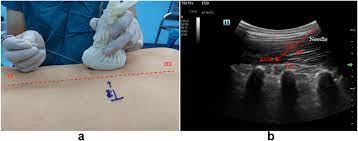
I. Understanding the Erector Spinae Plane Block
The erector spinae plane block is a regional anesthesia technique that involves administering a local anesthetic into the fascial plane between the erector spinae muscles and the underlying transverse processes of the spine. This block effectively targets the dorsal rami of the spinal nerves, providing analgesia to multiple levels of the spine and the surrounding structures.
II. Benefits of the Erector Spinae Plane Block
1. Effective Pain Relief: ESP blocks have demonstrated remarkable analgesic properties, offering effective pain relief during and after surgery. By targeting multiple spinal levels, this technique provides broader coverage of the sensory innervation, resulting in comprehensive pain control.
2. Reduced Opioid Consumption: The use of opioid medications for postoperative pain management can lead to adverse effects, such as nausea, respiratory depression, and constipation. ESP blocks reduce the need for opioids, minimizing the risk of opioid-related complications and promoting better recovery.
3. Faster Recovery: Patients who undergo laparoscopic colorectal surgery with ESP blocks experience reduced postoperative pain, leading to early mobilization and faster recovery. This advantage can contribute to shorter hospital stays and improved patient satisfaction.
4. Improved Patient Outcomes: By effectively managing pain, the ESP block contributes to enhanced patient outcomes, such as reduced postoperative complications and quicker return to daily activities.
III. Application of Erector Spinae Plane Block in Laparoscopic Colorectal Surgery
The ESP block can be performed using either a landmark-based or ultrasound-guided technique. In laparoscopic colorectal surgery, the ESP block is commonly administered as a part of a multimodal pain management approach.
1. Perioperative Pain Management: The ESP block is typically administered preoperatively or intraoperatively to ensure optimal pain control during and after surgery. By addressing the surgical site's specific pain pathways, it complements general anesthesia and other analgesic modalities.
2. Enhanced Recovery After Surgery (ERAS) Protocols: The ESP block aligns well with ERAS protocols, which aim to reduce surgical stress and promote faster recovery. Integrating ESP blocks into these protocols contributes to improved patient outcomes and shorter hospital stays.
3. Outpatient Colorectal Surgery: With the benefits of minimal invasiveness and effective pain control, laparoscopic colorectal surgery combined with ESP blocks has the potential to be performed on an outpatient basis, allowing patients to return home on the same day of the procedure.
IV. Safety and Considerations
The ESP block has shown an excellent safety profile with minimal side effects and complications. However, as with any medical procedure, it is essential to consider individual patient factors and potential contraindications.
Conclusion
The erector spinae plane block has emerged as a promising technique for pain management in laparoscopic colorectal surgery. Its ability to provide effective pain relief, reduce opioid consumption, and enhance patient recovery makes it a valuable addition to perioperative care. As medical research continues to explore novel pain management approaches, the ESP block holds significant potential to positively impact patient outcomes and improve the overall surgical experience in laparoscopic colorectal procedures.